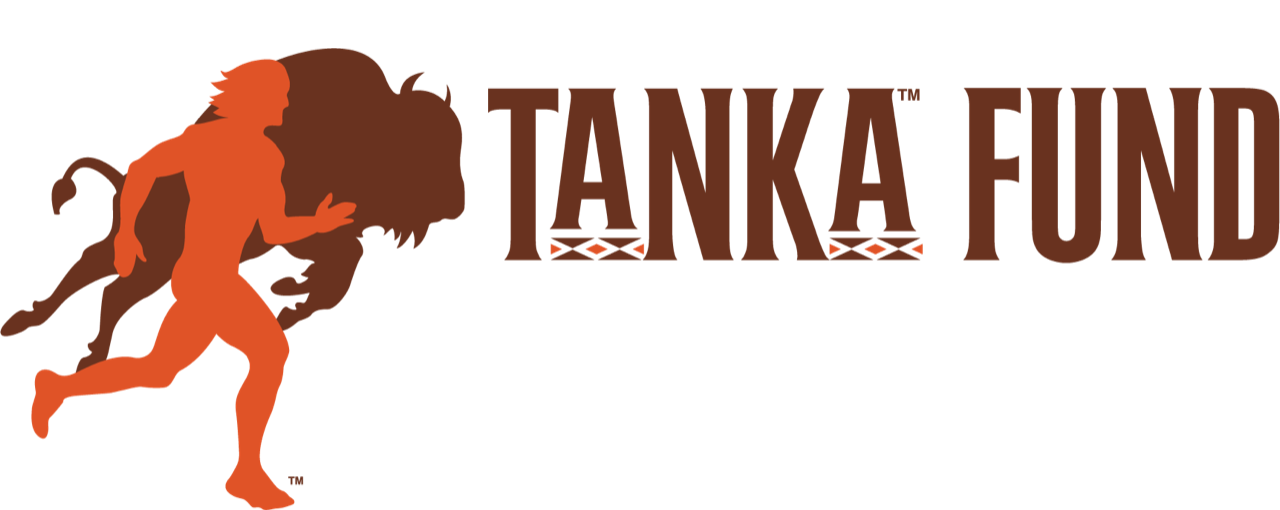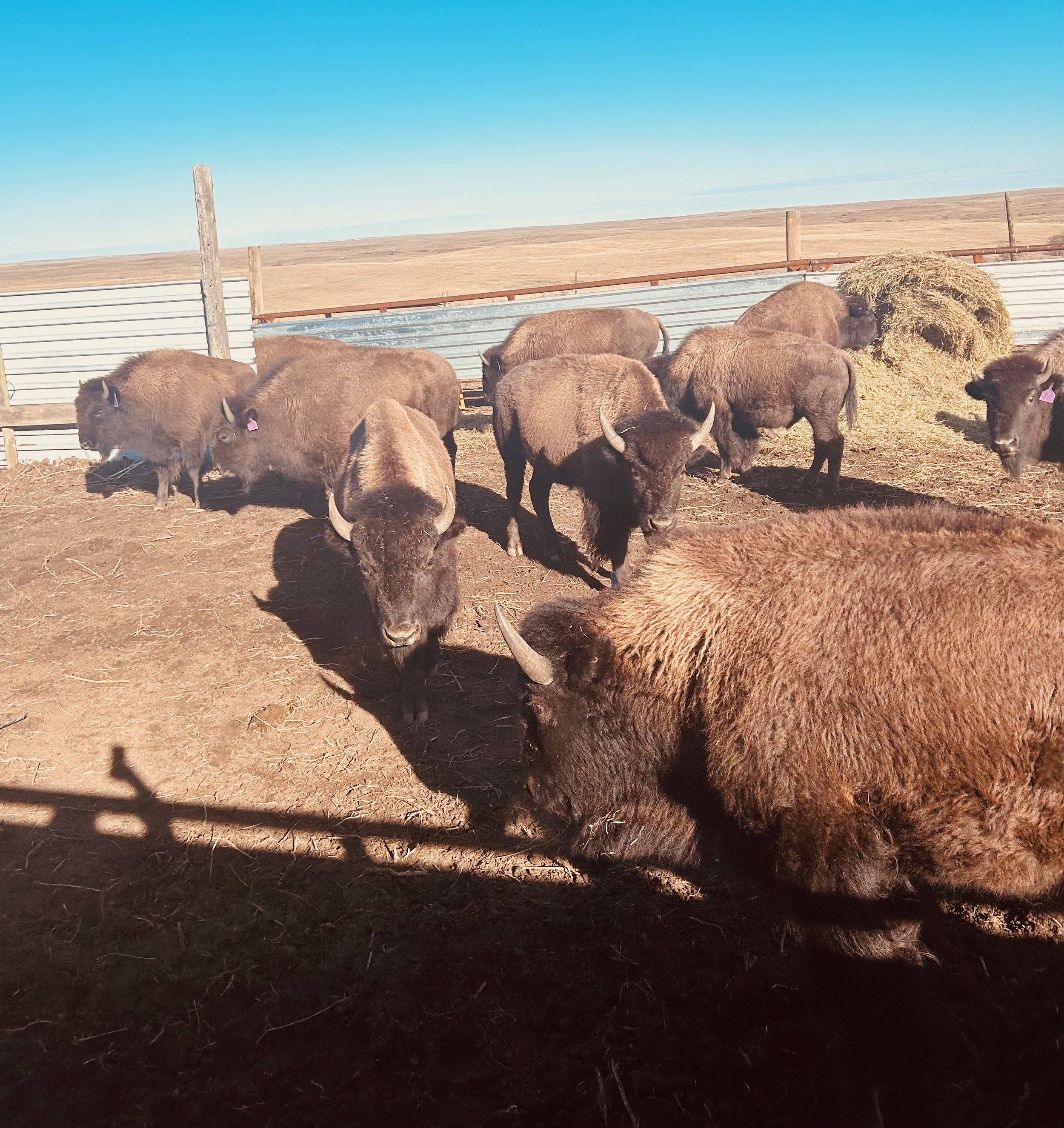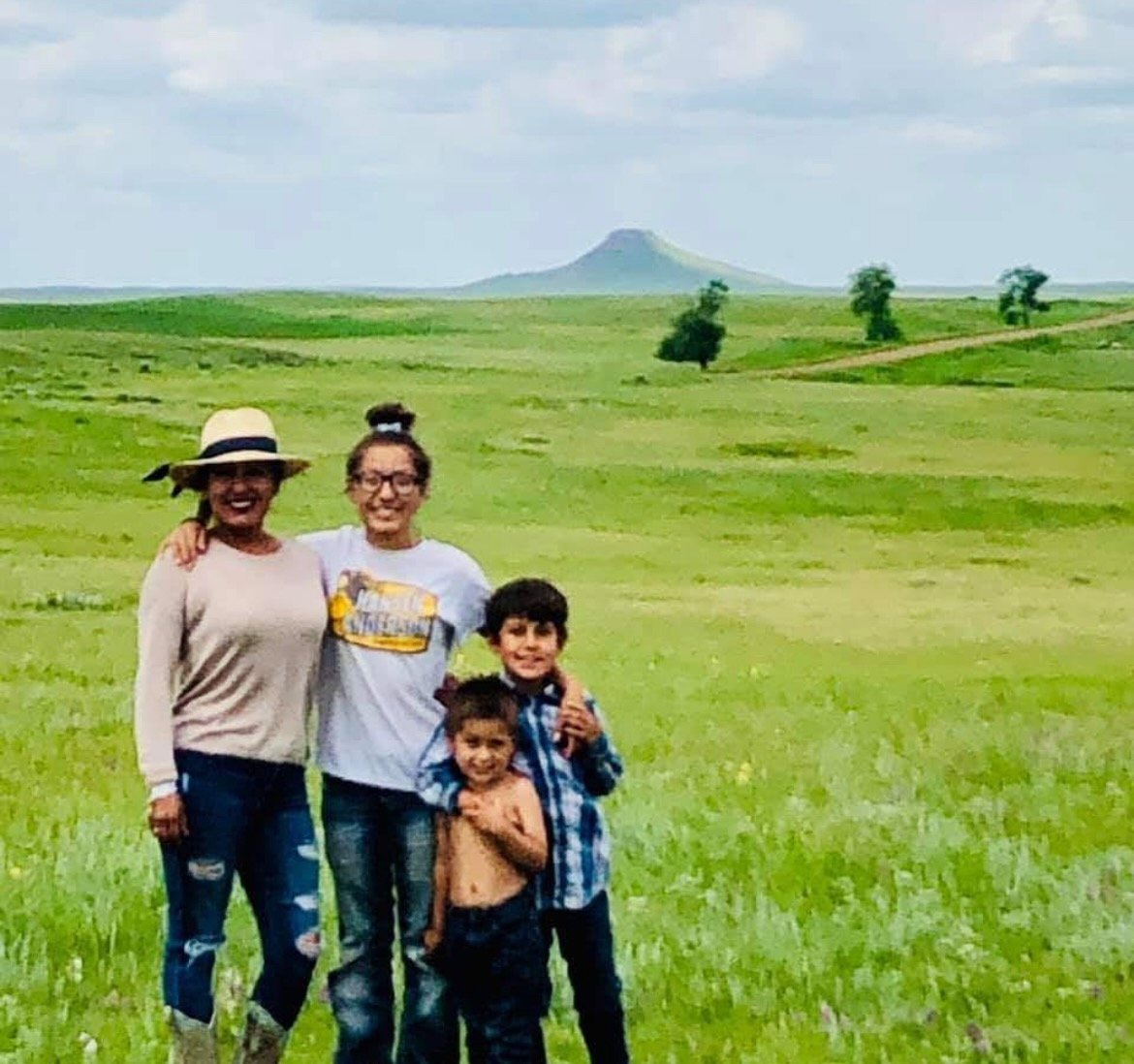Our Rancher Partners: Gail Uses The Knife
Gail Uses The Knife, a Lakota woman from the Cheyenne River Sioux Tribe, is one of Tanka Fund’s newest rancher partners, based in Thunder Butte, South Dakota — the same land where she grew up. With six years of experience raising cattle and just over a year working with Buffalo, Gail is committed to restoring Buffalo to her homelands as a cultural, ecological, and food security practice. This is the first time in 200 years Buffalo have lived on her land. In addition to ranching full-time, she works at Monument Health and is a mother of three. Her current herd includes 13 Buffalo. Gail emphasized the importance of Buffalo in Lakota culture, their role in restoring grasslands, and their resilience in harsh climates like South Dakota’s.
Key Points:
Location: Thunder Butte, South Dakota — Gail's childhood home.
Tribal afiliation: Lakota, Cheyenne River Sioux Tribe.
Buffalo stewardship: Began working with Buffalo one year ago; has had her current herd for six months.
Herd size: 13 Buffalo — 4 bulls and 9 cows.
Historical significance: This is the first time in 200 years Buffalo have lived on her land.
Background: Six years raising cattle; degree in Surgical Technology; works for Monument Health; mother of three.
Challenges: Needed additional fencing and infrastructure to start her Buffalo herd.
Ecological impact: Notes Buffalo help restore rangelands by dispersing seeds and enriching the soil.
Read full story below.
Gail’s herd is currently corralled as they are weanlings, but they’ll return to the open pasture this summer.
For Gail Uses The Knife, bringing Buffalo back to her family land in Thunder Butte, SD is a meaningful connection to her ancestral roots.
A Lakota woman from the Cheyenne River Sioux Tribe, Gail is one of Tanka Fund’s newest rancher partners. She began raising Buffalo full-time just one year ago and has been caretaking her current herd for six months. This is the first time in 200 years Buffalo have lived on her land.
“As a Native American rancher, I feel it is important to regrow the overall population of Buffalo and to be able to signify the animal as it is very important to our culture and spirituality,” Gail said.
While she’s a surgical technologist by trade and works at Monument Health in the Black Hills, Gail has long balanced professional life with the responsibilities of raising cattle — something she’s done for the past six years. Now, she’s adding Buffalo to that legacy. She's also a proud mom of three.
Today, Gail cares for a herd of 13 Buffalo: four bulls and nine cows. Getting started wasn’t easy. She faced the logistical and financial challenges of preparing the land — especially building strong enough fencing to contain the herd on pasture.
“As a cattle and Buffalo producer, I understand the importance of raising the animals to play a vital role for food security,” she said.
Buffalo meat, she explained, is not only a critical source of protein, but also historically provided essentials such as clothing, shelter, and tools. Gail also pointed to their positive environmental impact: Buffalo help restore rangelands by dispersing seeds, promoting plant growth, and enriching the soil.
“In South Dakota, we have some of the worst winters in areas with the least shelter,” she said. “Buffalo are well suited for our climates.”
For Gail, the rewards run deep. Seeing Buffalo on the land is both a spiritual connection and a living example for her children and community.
“I am very proud to see the younger generation appreciate the animals,” she said. “It helps them understand that practicing our tradition is attainable.”
#TankaFund #BuffaloConservation #SupportNativeRanchers #WildlifePreservation #ProtectTheBuffalo #SustainableRanching #NativeAmericanHeritage #ConservationEfforts #WildlifeProtection #SupportIndigenousCommunities #BuffaloRestoration #DonateForACause #WildlifeSupport #CulturalPreservation #IndigenousLandManagement #HelpSaveTheBuffalo #BuffaloHeritage #SustainableAgriculture #LandsLivesEconomies #Donate #Buffalo #Bison #TheReturn #NativeAmerican #Indigenous #Resilience #Restoration #CommunityEmpowerment #Sustainability #SustainableRanching #BuffaloRanching #CulturalRevitalization #Biodiversity #TankaImpact #FoodSovereignty



